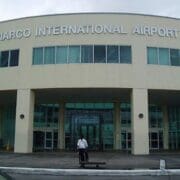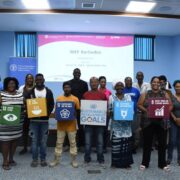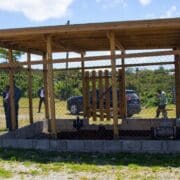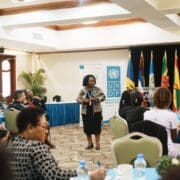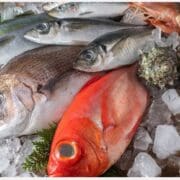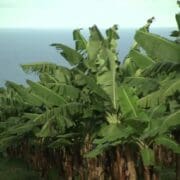Black Immigrant Daily News
Fish processing establishments and fishers across the Caribbean now have access to a new online hub of fisheries food safety resources. The Inter-American Institute for Cooperation on Agriculture (IICA), in partnership with the Caribbean Regional Fisheries Mechanism (CRFM) today announced the launch of the new Fisheries Food Safety Hub, developed with funding from the European Union (EU) under the 11th European Development Fund (EDF) Sanitary and Phytosanitary (SPS) Measures Project.
“At the European Union, we view our environmental and health ambitions – set in the EU’s Farm to Fork Strategy – as drivers for raising global standards through trade. Ensuring fisheries food safety is at the core of these standards, allowing not only for exports to the EU, but also within Caribbean countries. We therefore welcome the launch of the Fisheries Food Safety Hub which will serve as a learning platform for stakeholders and as a product of the longstanding partnership between the EU, IICA, and CRFM,” stated EU Ambassador, Malgorzata Wasilewska.
The purpose of the Fisheries Food Safety Hub is to increase accessibility to fisheries food safety compliance materials. It serves as the central access point for a wealth of food safety resources for the Caribbean, primarily developed under the 10th and 11th EDF SPS Measures Project. These include guides and manuals, training videos, infographics, and policy documents covering the entire fisheries value chain: pre-harvest, harvest, and post-harvest.
The Hub also features resources developed through complementary initiatives to strengthen food safety in the region, including the Leadership Institute of the Caribbean Network of Fisherfolk Organisations (CNFO). IICA and the CRFM developed the Hub for stakeholders from both the public and private sectors in the fifteen CARIFORUM countries.
The partners especially catered to the needs of fishers and fisher organizations, as well as aquaculture farmers, thereby expanding the reach of the project’s online platform to the agriculture, fisheries, and aquaculture sectors. “Having ready access to current scientifically based information on a timely basis is fundamental for strengthening compliance with international Sanitary and Phytosanitary Measures and ultimately contributes towards improved market access and trade in the Caribbean Region.
Hence IICA is very pleased to collaborate with the CRFM with funding from the European Union to develop this important information resource for the fisheries sector,” stated the Head of IICA’s Agricultural Health, Food Safety and Quality Programme, Dr Jose Urdaz. Mr. Milton Haughton, Executive Director of the Caribbean Regional Fisheries Mechanism said: “The Fisheries Food Safety Hub is a very important development and will be beneficial to all our stakeholders in the CARIFORUM countries–from producers to consumers, as well as national and regional regulatory authorities with responsibility for ensuring safe and wholesome supplies of fish and fishery products to local markets, and for monitoring the implementation and compliance with trading measures and standards to promote sustainable trade. This is of particular importance given that food safety is of highest priority, especially in the context of expanding trade while also reaching the target of a 25% reduction in the Caribbean’s food import bill by 2025, as mandated by our Heads of Government.”
Adrian LaRoda, Chair of the Caribbean Network of Fisherfolk Organisations, said: “The Hub itself will be very beneficial to the CNFO, as it is another platform for us, small-scale fishers, to be able to share our message… to reach a greater number of participants, particularly those who are not within the CNFO constituency.”
LaRoda added that CNFO members will take advantage of the Fisheries Food Safety Hub, and they will continue to update the information from the CNFO Leadership Institute which is featured on the Hub, and to use the platform as a part of their ongoing efforts to strengthen the capacity of fishers in the Caribbean.
Udo Karg, the Acting Chair of the Suriname Seafood Association and CEO of Ocean Delight, underscored that food safety is the highest priority. One of Suriname’s export establishments, Ocean Delight, is featured on the Fisheries Food Safety Hub, as one of entities which received training under the 11th EDF SPS Measures Project. All the materials for that training are available for open access on the Fisheries Food Safety Hub.
Karg also sees the Food Safety Hub as a marketing tool which demonstrates the work done in Suriname to ensure fisheries food safety, particularly for exporting to the EU.
Eardley Simmons, Managing Director of Bequia Seafood in Saint Vincent and the Grenadines, which has been in operation since October 2017, agreed that the Fisheries SPS Hub can be used as a tool to strengthen capacity in the fisheries sector. He said that they would greatly benefit if they could get assistance from another processing plant to train their workers, and this exchange could help them to improve their standards by learning from what other establishments have been doing to address their challenges. Bequia Seafood could, in turn, offer training to other establishments in the region.
The resources that are showcased on the Fisheries Food Safety Hub will help persons in the fisheries and aquaculture sector to strengthen their knowledge on food safety, and especially the Sanitary and Phytosanitary Measures that are important for trade within and outside of the Caribbean Region. The Fisheries Food Safety Hub is linked with the e-Library of the project, available on edfspscariforum.online, which offers authoritative digital resources dedicated to stakeholders interested in Agricultural Health, Food Safety and Food Quality in the CARIFORUM region.
Donate At Caribbean News Service, we do not charge for our content and we want to keep it that way. We are seeking support from individuals and organisations so we can continue our work & develop CNS further.
NewsAmericasNow.com

